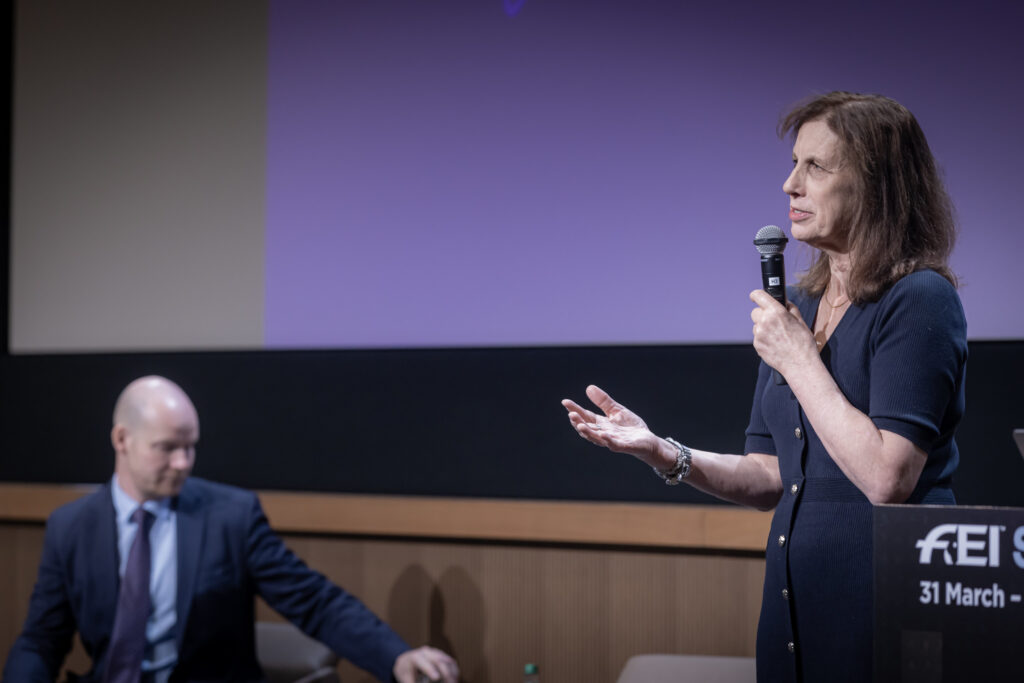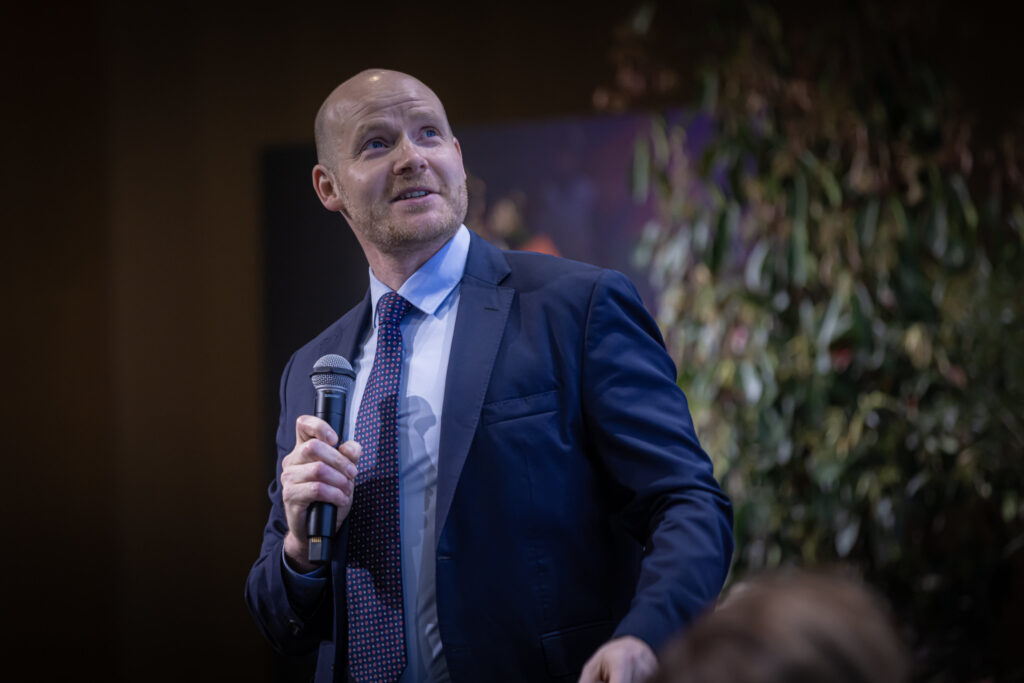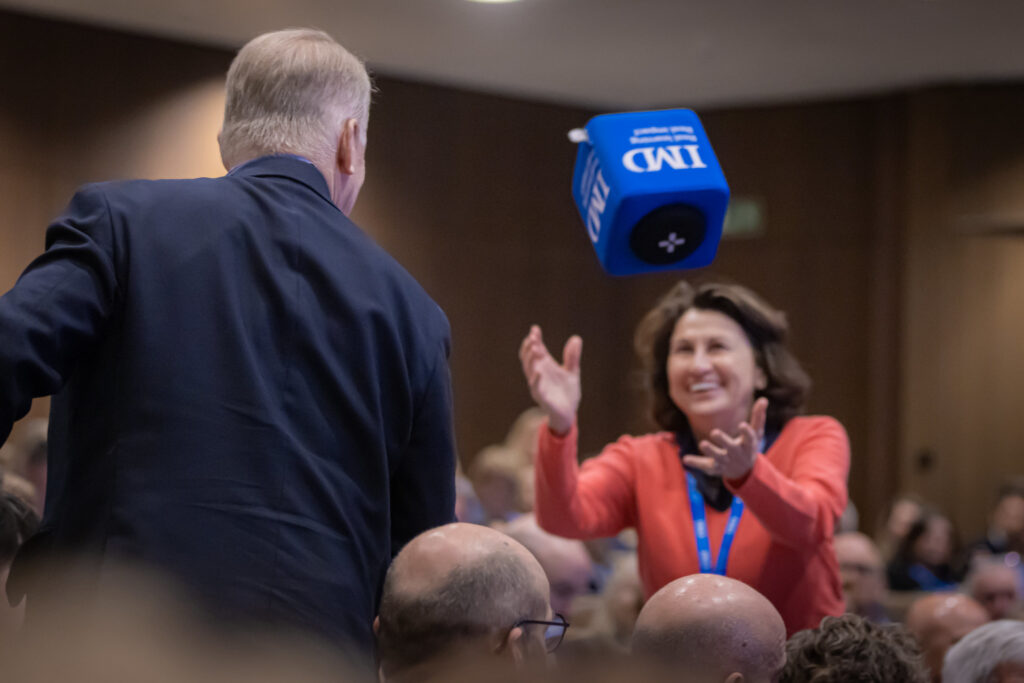The search for a new president has begun
The second day of the FEI Sports Forum 2025 opened with a pivotal session focused on the profile and job description of the future FEI President. The session was moderated by Janice Shardlow (GBR), Chair of the FEI Audit and Compliance Committee, and featured an in-depth presentation from James Carr (GBR), Executive Director of the Association of Summer Olympic International Federations (ASOIF).

Why This Session Now?
The current FEI President, Ingmar De Vos, will complete his final term in 2026. In preparation, the FEI Board established the President’s Succession Working Group (PSWG) in November 2023 to consider the evolving needs of the federation, recommend updates to the presidential role, and potentially amend statutes and regulations. Shardlow, who chairs the PSWG, presented the group’s mandate and current thinking.
Key Messages:
- The FEI must decide whether the next President should continue in a highly executive role or return to a more ambassadorial or supervisory position.
- A formal job description may be proposed, alongside potential updates to FEI rules and statutes, at the FEI General Assembly in November 2025.
- The modern demands of international sport—ranging from safeguarding and sustainability to commercial partnerships and political diplomacy—have significantly expanded the expectations for sports federation presidents.
James Carr’s Insights:

Carr offered comparative insight from across Olympic sports federations, noting that FEI is one of the few to proactively re-examine the presidential role.
“Better governance doesn’t guarantee success, but bad governance almost guarantees failure,” Carr said.
He explained that federation leadership models typically fall into three categories:
- Honorary – symbolic or ambassadorial, often rotating by region.
- Supervisory – board chair with oversight, but not executive power.
- Executive – hands-on, full-time leadership of both strategic and operational matters.
Carr noted that Ingmar De Vos currently represents the most executive model, overseeing strategy, partnerships, legal matters, welfare, Olympic relations, and media communications.
Shardlow added: “The amount of work that [De Vos] accomplishes is beyond what I could begin to do. We have to admire his energy and drive.”
She laid out the president’s statutory responsibilities (chairing the General Assembly, Board, and Olympic Council) as well as De Vos’ extensive active roles, which include leading the Longines League of Nations, representing FEI within the IOC and WADA, and guiding the FEI’s approach to equine welfare and modern governance.
Shardlow closed by urging National Federations to think carefully: “It is your responsibility to get the right person. If we do, the FEI will thrive. If we don’t, we won’t.”
She then opened the floor to delegates with a series of guiding questions:
- Should the role be executive, supervisory, or honorary?
- Should the FEI have a formal job description?
- Should candidates come from National Federations?
- Should the role be full-time?

Floor Discussion (a few delegate names might be wrong or missing)
Sönke Lauterbach (GER): “We will need to continue on the same path with a working president. It needs to be in combination with the Secretary General role.”
Tom Gordin (FIN): “Ingmar De Vos has been extraordinary during his years, very active and involved. Have you been thinking about giving more independence to the technical committees?”
Eleonora Ottaviani (IJRC): “We both have been around since Prince Phillip. We would like for the technical committees to have the decision-making role.”
Rosie Williams (GBR): “Surely we should be looking at world-class governance. So, therefore, we should be looking at the President, the Secretary General, the skills matrix of the Board, all that stuff that normal organisations now are required to do. We need a job description. We recruit to the job description that fits the skills matrix. That’s moving toward good corporate governance.”
Tim Haddaway (British Equestrian): “We’ve got to be talking about the modernisation of sport. We’ve transitioned over the last century, and we’ve got to be up to date. You are going to be looking for a unicorn, but you also need essential requirements. Let the NSFs nominate, but the Board must find what’s best for the future.”
John McEwen (British Equestrian): “The President’s role and the Secretary General’s role need to marry up. You need job descriptions for both. Otherwise, you won’t get a functional system.”
Jason Brautigam (British Dressage): “The Presidential role now is executive. It is not ambassadorial. It is not ceremonial anymore. International sport has moved on. This is a professional role, and therefore needs a role description and due consideration in the recruitment process.”
George Di Mares (GRE): “There is consensus that the President role is executive. But it cannot be identified in isolation from overall governance. Governance comes with responsibility. This hybrid model—corporate and political—means we need checks and balances. We’ve had one exceptional person for three terms, but we need to prepare the structure for whoever comes next.”
Sameh El Dahan (EGY): “De Vos is making it difficult for his successor as he is doing a good job. Everybody will have to work as a team.”
Dennis Duggan (Horse Sport Ireland): “Thank you for the presentation. The requirement to review both roles is necessary. Reporting structures need to be reviewed. Does Ingmar keep the position in IOC when he leaves the FEI or is the position linked to FEI? Are there more federations going through the same path as FEI? Should it be an executive president?”
James Carr: “The position is linked to the presidency. He is re-elected for eight years independently as he now is ASOIF President. FEI is the first pioneering association going through this process.”
Johan Fyrberg (Secretary General, Sweden): “Can you go too far in the professionalisation? Could the responsibilities be too far-reaching? Are we looking for a superhuman?”
Janice Shardlow: “We look for essential and desirable criteria. We cannot narrow the field too much.”
Regine Douglas (Virgin Islands): “Have the search a little wider. It is still an ambassadorial role to some degree.”
Quentin Simonet (French Federation): “The combination of Secretary General and President is essential. It is important to look into the Executive Board and how they interact with the President. The link to the members—the National Federations—needs to be at the center of the discussion.”
David O’Connor (USEF, FEI Board Member): “Right now the President appoints the Secretary General. Thinking of separating the different roles, is it possible?”
Janice Shardlow: “The President makes the nomination for Secretary General, but the Board approves it. So it is not a decision solely by the President.”
Ali (International Jumping Organisers Club): “In your presentation, you mentioned strategic and promotional responsibilities. Should they be formally included in the job description?”
Jessica Kürten (Athlete & Board Member): “There has been a lot of good work done. How can we assure the continuity if we have a change in both President and Secretary General?”
Mariette Withages (former Chair, FEI Dressage Committee): “It was interesting with the presentation… but does Ingmar maybe have a twin brother?”
More floor input continued afterward, but consensus seemed to form around several key points:
- A formal job description is necessary.
- The President’s role must be executive and clearly defined.
- The President and Secretary General roles must be viewed in relation to each other.
- The selection process should evolve toward best-practice governance and accountability.
The FEI Board is expected to consolidate feedback and present next steps at the FEI General Assembly in November 2025.
